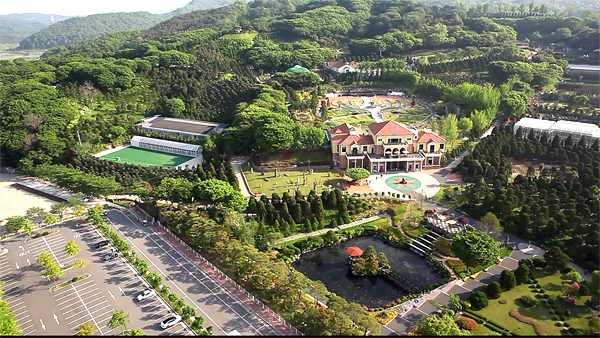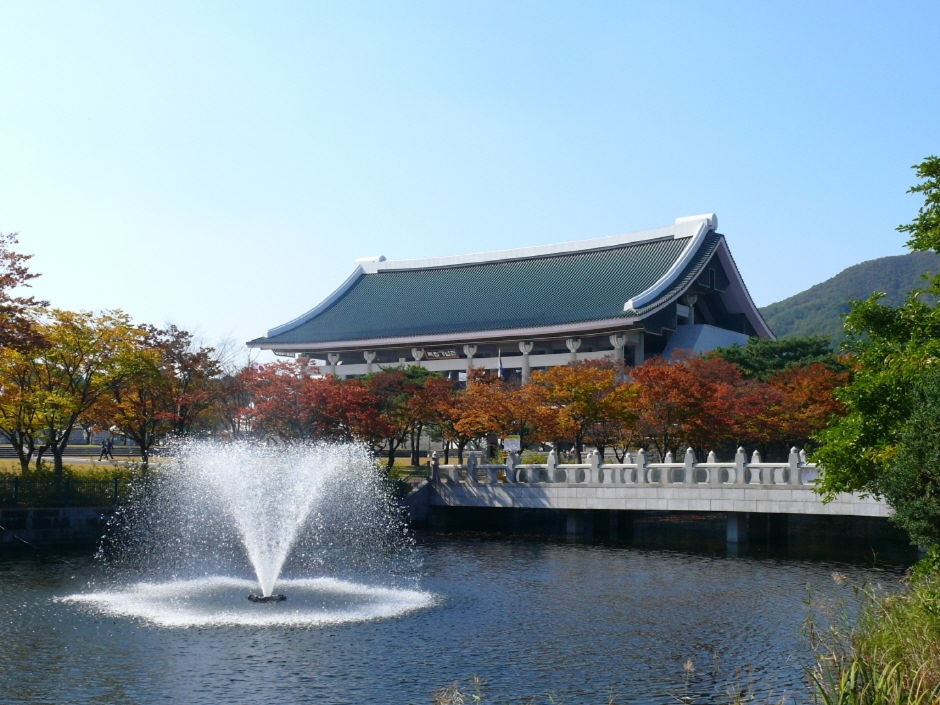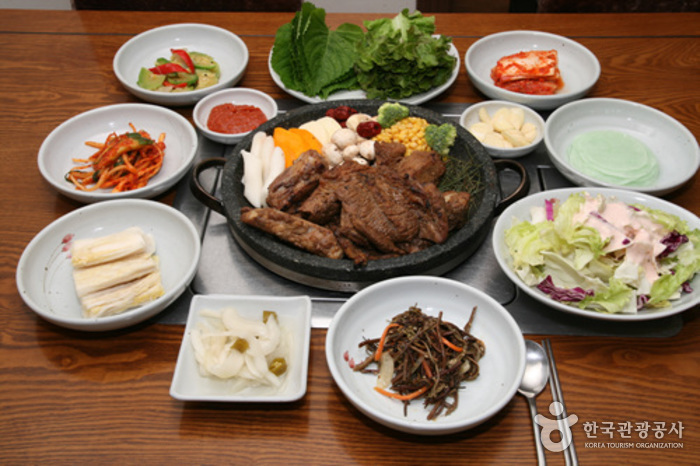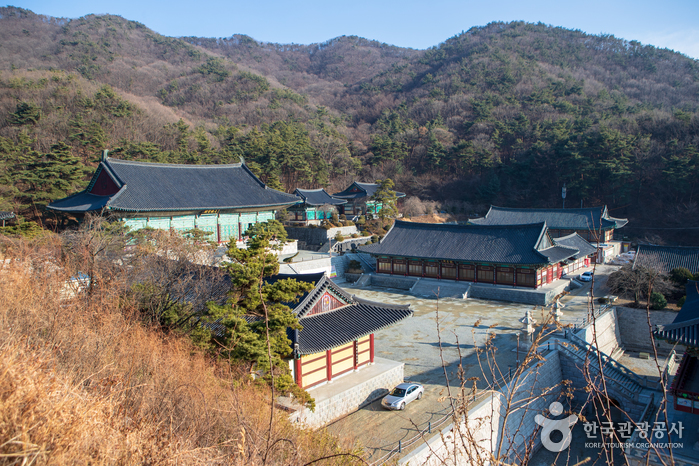Artbox - Cheonan Dujeong Branch [Tax Refund Shop] (아트박스 천안두정점)
12.0Km 2024-06-27
165, Dujeong-ro, Seobuk-gu, Cheonan-si, Chungcheongnam-do
-
E-Mart - Cheonan Seobuk Branch [Tax Refund Shop] (이마트 천안서북)
12.1Km 2024-04-22
20, Samsung-daero, Seobuk-gu, Cheonan-si, Chungcheongnam-do
-
Beartree Park (베어트리파크)
12.2Km 2025-05-20
217, Sinsong-ro, Sejong-si
+82-44-866-7766
Beartree Park is a beautiful natural space in Sejong founded by entrepreneur Lee Jae-yeon. The park first started out as a private garden cared for by Lee personally. The garden was turned into a park and opened to the public in 2009, boasting a beautiful collection of flora and fauna. Indoor and outdoor botanical gardens, junipers, wild flowers, irises, and bonsais are tended with the utmost of care. In addition to the magnificent gardens, visitors can also observe family of deer, bears, birds, and more.
The Independence Hall of Korea (독립기념관)
12.6Km 2024-10-28
1, Dongnipginyeomgwan-ro, Dongnam-gu, Cheonan-si, Chungcheongnam-do
The Independence Hall of Korea collects, preserves, displays, and researches Korean historical documents and relics from the past to the present, focusing on the independence movements during the Japanese colonial period. The Independence Hall officially opened on the anniversary of Independence Day in 1987 thanks to donations from the public.
Deulkkot (들꽃)
13.1Km 2016-10-20
110, Hoseodae-gil, Dongnam-gu, Cheonan-si, Chungcheongnam-do
+82-41-522-0280, +82-41-522-0580
Deulkkot specialties include hanjeongsik (Korean course meal) and meat dishes. The restaurant has a beautiful garden, so it’s a great place to dine and enjoy the natural scenery at the same time.
Sejong Cheongansa Temple (청안사(세종))
13.3Km 2025-05-20
128-23, Ganeusil-gil, Jeonui-myeon, Sejong-si
+82-44-867-3407
Sitting at the foot of a mountain near Ganeusil Village, Cheongansa Temple belongs to the Jogye Order of Korean Buddhism. It had been believed to have been built in 1900, but the roof tile and white porcelain pieces from the mid-Joseon dynasty period found near the temple suggested that it might have been built even earlier. Cheongsansa had also been thought to be a branch of Biamsa Temple, which is presumably built in the 7th century during the late Baekje kingdom period.
Unjusanseong Fortress (운주산성)
14.2Km 2021-08-31
Migok-ri, Sejong-si
+82-44-300-3423
Unjusanseong Fortress, also known as Gosansanseong Fortress, is a cultural heritage of the Baekje dynasty. This is a mountain fortress built along the surrounding three mountain peaks in the westernmost and southernmost parts of Unjusan Mountain. The stone fortress wall, which borders three villages in Jeondong-myeon and two villages in Jeonui-myeon, is 3,210 meters long and two meters wide with a x_height that ranges from two to eight meters. The walls follow the natural geographical features of the mountain range, with the southern walls surrounding the mountain's peak.
Remnants of a village can still be observed within the fortress walls, such as the fortress gate and a ritual site. Pieces of earthenware from the Baekje period, porcelain from the Goryeo and Joseon periods, and broken tiles from the Baekje, Goryeo and Joseon periods have been discovered around the site as well.
Gakwonsa Temple (각원사)
14.6Km 2024-03-15
245 Gagwonsa-gil, Dongnam-gu, Cheonan-si, Chungcheongnam-do
+82-41-561-3545
Gakwonsa Temple, nestled midway up Taejosan Mountain in Cheonan, stands as a beacon of hope for the peaceful reunification of Korea. The temple's most renowned feature is the immense bronze statue of the seated Amitabha Buddha, which measures 15 meters in x_height, 30 meters in circumference, and weighs 60 tons. Additionally, Gakwonsa Temple is distinguished by its Daeungjeon Hall, the largest Dharma Hall in Korea. The temple's Gaesan Memorial Hall houses a collection of artifacts associated with the temple.
Geumisanseong Fortress (금이성)
14.7Km 2025-05-20
Songseong-ri, Sejong-si
+82-44-300-3444
Geumiseong is a mountain fortress built on the summit of Geumseongsan Mountain, which rises 430 meters above sea level. It overlooks Jeonui and Cheonan to the north and Geumgang River to the south. The architecture style of Geumiseong Fortress is a combination of the
styles of the Baekje dynasty and the early Unified Silla. Based on the relics found inside the fortress, it is thought to have been built in the Goryeo period. The robustness of the fortress takes advantage of the rugged topography, so much so that it had been known as ironclad bastion among common people.
The eastern side of the fortress has considerably collapsed, but the southern part is in a relatively good condition. The western and northern walls are also in bad conditions.
Some earthenware pieces were found where there once stood a watchtower. Also, some pieces of roof tiles were found where there was a fortress building in the central part of the fortress on mountain summit. The earthenware pieces are hard porcelain and soft glass wares like bowls and pots. The tile pieces mostly feature fishbone patterns in dark gray color.
Mega Mart - Cheonan Branch [Tax Refund Shop] (메가마트 천안점)
15.3Km 2024-04-22
1348, Cheonan-daero, Seobuk-gu, Cheonan-si, Chungcheongnam-do
-
![Artbox - Cheonan Dujeong Branch [Tax Refund Shop] (아트박스 천안두정점)](http://tong.visitkorea.or.kr/cms/resource/05/3314405_image2_1.jpg)
![E-Mart - Cheonan Seobuk Branch [Tax Refund Shop] (이마트 천안서북)](http://tong.visitkorea.or.kr/cms/resource/93/2883193_image2_1.jpg)





![Mega Mart - Cheonan Branch [Tax Refund Shop] (메가마트 천안점)](http://tong.visitkorea.or.kr/cms/resource/85/2883185_image2_1.jpg)
 English
English
 한국어
한국어 日本語
日本語 中文(简体)
中文(简体) Deutsch
Deutsch Français
Français Español
Español Русский
Русский